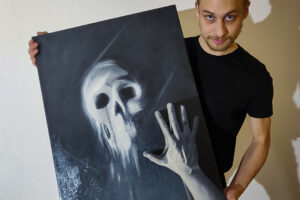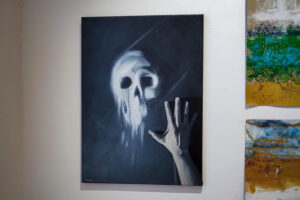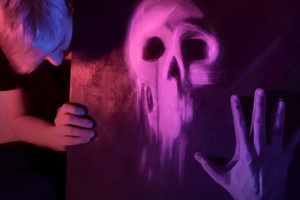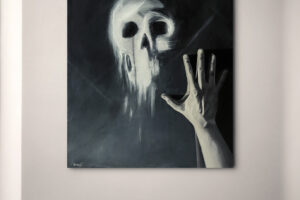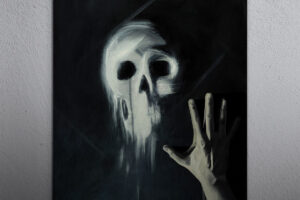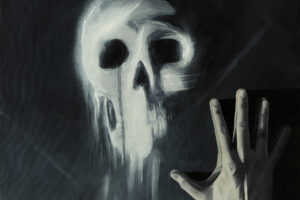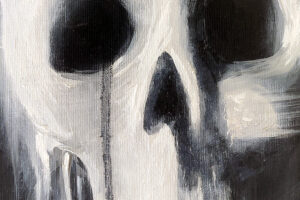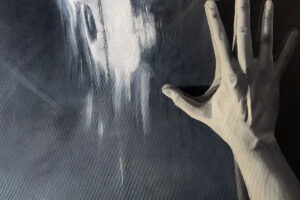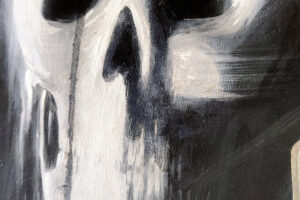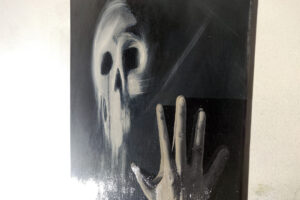Death in the Mirror
Reprodukce
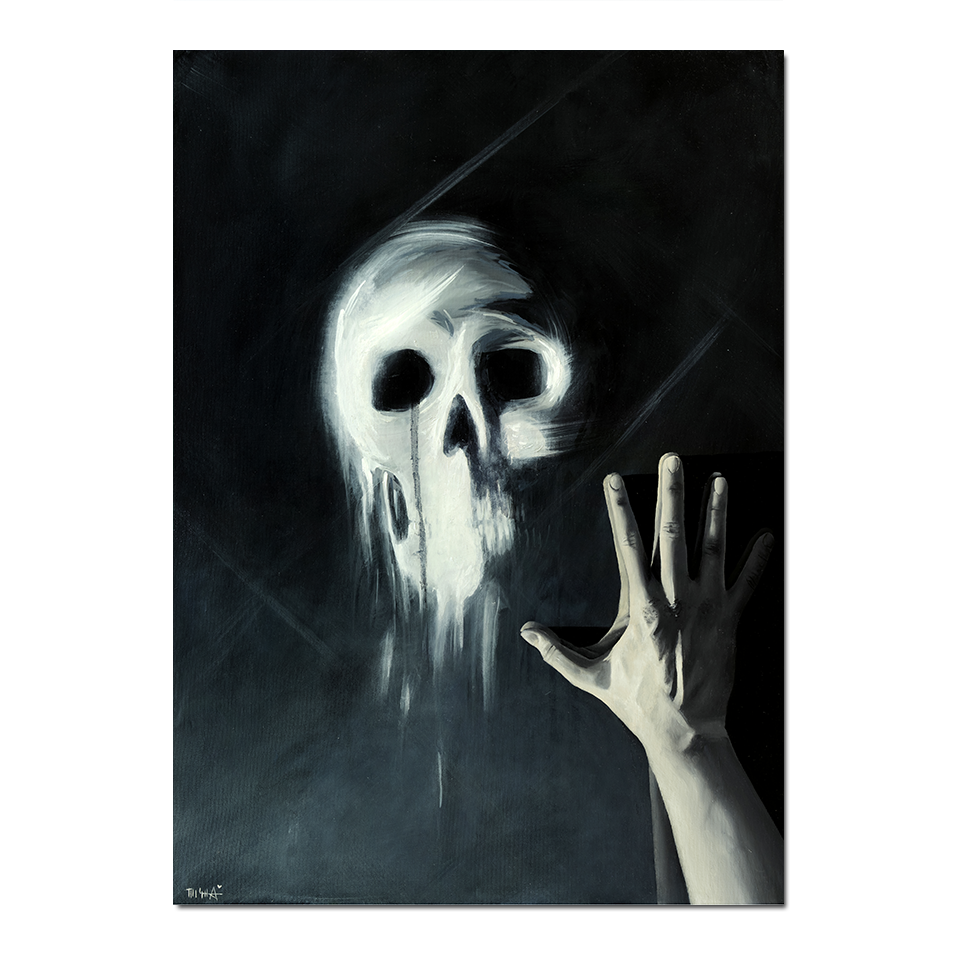
Technika
Obraz je vytištěn na matný fotopapír HP o gramáži 270 g/m2 na špičkovém 12-ti inkoustovém plotru Hewlett-Packard. Bez rámu.
Rozměr
70×50 cm
Počet dostupných kusů
2
Cena
1000,-
Pokud máte zájem o tuto reprodukci, napište mi prosím dotaz.
Toto temné dílo vychází z deprese. (dívám se do zrcadla, kde místo sebe vidím vizi své smrti / budoucnosti.) Představuje mé spojení s ní. Obraz v zrcadle je namalován způsobem, který je abstraktnější, abych vystihl rozdíl mezi tím, co je vyobrazeno v zrcadle, a realistickou rukou, která se ho dotýká.
„Ahoj temnoto, stará známá. Jak ses měla?“ Co děláš, když se cítíš, jako bys nebyl nikdy schopen získat to, co jsi v životě nejvíc chtěl? Chceš přesto žít?
Já se na to vždy necítím.
Chci žít svůj život v bolesti?
A z toho vychází poznání, že tu nebudu navždy. A možná mi moc nezáleží na tom, jestli umřu za rok nebo za 60 let. Až přijde můj čas, tak přijde a já jsem s tím smířený. Ale má to i svou dobrou stránku. Motivuje mě to k tomu, abych víc makal, tvořil víc obrazů, dokud tu jsem.
Toto dílo bylo vystaveno v galerii M.A.D.S. Milano v rámci výstavy s názvem Dream Room – International Contemporary Art Exhibition.
Toto je analýza a kritická recenze, kterou napsala kurátorka umění Silvia Grassi:
"A glass mirror is used to look at the face and works of art are used to look at one's soul"
(cit.George Bernard Shaw)
Looking in the mirror is a way of admiring one's external figure, but it is also the only way to look
straight into our own eyes and, being the eyes the mirror of the soul, therefore to look inside, to reflect
on our internal aspects, not visible on the outside. The mirror places us before ourselves, showing us
the outer and inner part of our being, our body and our soul. The same happens when we observe the
works of an artist: the work is a mirror on his soul, a gateway for his deeper self.
The young Czech artist Misha Fryč, with his work entitled "Death in the mirror", shows us what he
sees reflected in the mirror: the abstract and the undefined contours image of death, which also
symbolizes a distant future. But he is not afraid, on the contrary, he touches it with his hand. In fact,
the work takes us inside his reflection and his very intimate and personal thought: the awareness that
we do not live forever and therefore, without fear of the future, we must succeed in making the best of
every single moment that is granted to us. As we see in the work presented here, the communicative
strength and effectiveness of Misha's works is the ability to blend abstraction with realism, so as to
unite dream and reality, fantasy and concrete events, inner thoughts and lived life in one whole.



